Keynote Speakers
Energy-Optimized Partial Computation Offloading for Delay-Sensitive Applications in Heterogeneous Mobile Edge Computing
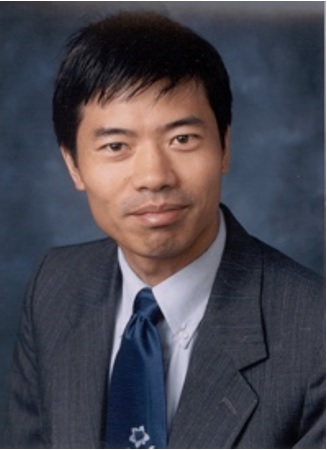 MengChu Zhou, Distinguished Professor
MengChu Zhou, Distinguished Professor
Helen and John C. Hartmann Department of Electrical and Computer Engineering, New Jersey Institute of Technology, USA
Abstract: Mobile edge computing (MEC) is an emerging architecture that supports computing, storage, and networking
resources to users’ mobile devices (MDs). MDs have limited resources and energy capacity, and they have to offload
some tasks of computational/delay-intensive applications to their nearby small base station (SBS), which is a paradigm
of MEC. Although task offloading decreases energy consumed by MDs, it brings additional transmission delay among MDs
and SBS/cloud data center (CDC), and processing delay in SBS and CDC. This talk considers two challenging research
problems in MEC. First, this talk introduces a constrained optimization problem to minimize the total cost of a
heterogeneous system including MDs, an SBS, and a CDC while strictly guaranteeing delay limits of tasks.
Second, this talk further considers a more complicated scenario including both macro base stations (MBSs) and small
base stations (SBSs) where resource-limited MDs are associated with them. This talk then introduces a partial
computation offloading approach for delay-sensitive applications in such a hybrid network including MDs, SBSs, and an MBS.
The total energy consumption minimization is formulated as a constrained mixed-integer nonlinear program.
It jointly optimizes task offloading among MDs, SBSs, and MBS, users’ connection to SBSs, MDs CPU speeds and
transmission power, and channels bandwidth allocation. To solve the above two problems, a hybrid method named
Genetic Simulated-annealing-based Particle swarm optimization (GSP) is proposed and it integrates genetic
operations of genetic algorithm and the Metropolis acceptance rule of simulated annealing into particle swarm
optimization. Simulations with real-world data demonstrate that GSP significantly outperforms other methods
in the energy consumption of the system.
Biography: MengChu Zhou received his B.S. degree in Control Engineering from Nanjing University of Science and
Technology, Nanjing, China in 1983, M.S. degree in Automatic Control from Beijing Institute of Technology, Beijing,
China in 1986, and Ph. D. degree in Computer and Systems Engineering from Rensselaer Polytechnic Institute, Troy,
NY in 1990. He joined New Jersey Institute of Technology (NJIT), Newark, NJ in 1990, and is now Distinguished
Professor in Electrical and Computer Engineering. His research interests are in Petri nets, intelligent automation,
Cloud/edge Compputing, Internet of Things, big data, web services, and intelligent transportation. He has over 1000
publications including 13 books, 700+ journal papers (600+ in IEEE transactions), 30 patents and 29 book-chapters.
He is the founding Editor of IEEE Press Book Series on Systems Science and Engineering, Editor-in-Chief of IEEE/CAA
Journal of Automatica Sinica, and Associate Editor of IEEE Internet of Things Journal, IEEE Transactions on Intelligent
Transportation Systems, and IEEE Transactions on Systems, Man, and Cybernetics: Systems. He is a recipient of Humboldt
Research Award for US Senior Scientists from Alexander von Humboldt Foundation, Franklin V. Taylor Memorial Award
and the Norbert Wiener Award from IEEE Systems, Man and Cybernetics Society, Excellence in Research Prize and Medal
from NJIT, and Edison Patent Award from the Research & Development Council of New Jersey. He is a life member of
Chinese Association for Science and Technology-USA and served as its President in 1999. He is a Fellow of IEEE,
International Federation of Automatic Control (IFAC), American Association for the Advancement of Science (AAAS),
Chinese Association of Automation (CAA) and National Academy of Inventors (NAI).
Side and Covert Channels: the Dr. Jekyll and Mr Hyde of Modern Technologies
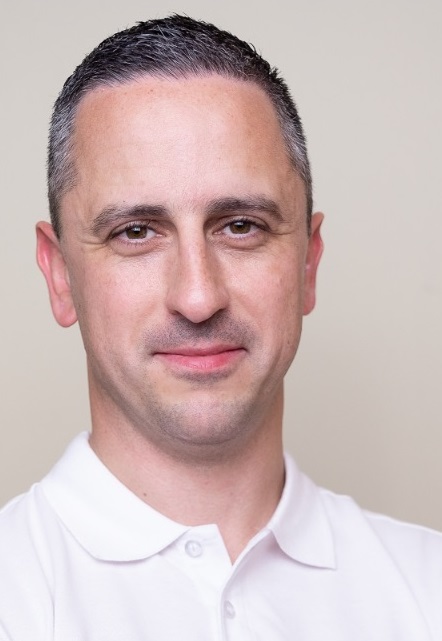 Mauro Conti, Full Professor
Mauro Conti, Full Professor
University of Padua, Italy
Abstract: While Smartphone and IoT devices usage become more and more pervasive,
people start also asking to which extent such devices can be maliciously
exploited as “tracking devices”. The concern is not only related to an
adversary taking physical or remote control of the device, but also to
what a passive adversary without the above capabilities can observe from
the device communications. Work in this latter direction aimed, for
example, at inferring the apps a user has installed on his device, or
identifying the presence of a specific user within a network. In this
talk, we discuss threats coming from contextual information and to which
extent it is feasible, for example, to identify the specific actions
that a user is doing on mobile apps, by eavesdropping their encrypted
network traffic. We will also discuss the possibility of building covert
and side channels leveraging timing, heat, energy consumption, and audio
signals, to steal information from mobile devices, as well as inferring
keypresses, password & PINs.
Biography: Mauro Conti is Full Professor at the University of Padua, Italy. He is
also affiliated with TU Delft and University of Washington, Seattle. He
obtained his Ph.D. from Sapienza University of Rome, Italy, in 2009.
After his Ph.D., he was a Post-Doc Researcher at Vrije Universiteit
Amsterdam, The Netherlands. In 2011 he joined as Assistant Professor at
the University of Padua, where he became Associate Professor in 2015,
and Full Professor in 2018. He has been Visiting Researcher at GMU,
UCLA, UCI, TU Darmstadt, UF, and FIU. He has been awarded with a Marie
Curie Fellowship (2012) by the European Commission, and with a
Fellowship by the German DAAD (2013). His research is also funded by
companies, including Cisco, Intel, and Huawei. His main research
interest is in the area of Security and Privacy. In this area, he
published more than 400 papers in topmost international peer-reviewed
journals and conferences. He is Editor-in-Chief for IEEE Transactions on
Information Forensics and Security, Area Editor-in-Chief for IEEE
Communications Surveys & Tutorials, and has been Associate Editor for
several journals, including IEEE Communications Surveys & Tutorials,
IEEE Transactions on Dependable and Secure Computing, IEEE Transactions
on Information Forensics and Security, and IEEE Transactions on Network
and Service Management. He was Program Chair for TRUST 2015, ICISS 2016,
WiSec 2017, ACNS 2020, CANS 2021, and General Chair for SecureComm 2012,
SACMAT 2013, NSS 2021 and ACNS 2022. He is Fellow of the IEEE, Senior
Member of the ACM, and Fellow of the Young Academy of Europe.
The path from rigid to soft robotics: Symbiotic Control of Wearable Soft Suits for human Augmentation and Assistance
 Lorenzo Masia, Professor
Lorenzo Masia, Professor
Institut fur Technische Informatik (ZITI), Heidelberg University, Germany
Abstract: Soft wearable exosuits have been introduced in the last decade as possible candidates to overcome
the limitations from devices using rigid structures: the exoskeletons.
Despite the Exosuits initially promised tangible improvements, yet their soft wearable architecture presents
strong drawbacks, placing this technology more in a complementary position rather than on a higher step of
the podium respect to their predecessors.
Motivations can be found in their soft structure which not only undershoots in terms of assistance delivery
respect to the exoskeletons, but also introduces non-linear dynamic behaviours making difficult the formalization
of a robust control implementation and substantially hampering the matching with the wearer´s biomechanics.
During my speech I will introduce the progress from our research on soft wearable exosuits, by presenting
novel solutions on mechanical design, novel implementation of control strategies based n machine learning to
master the non-linear behaviours. I will discuss in details how using biosignals by means of a realtime
techniques based on musculoskeletal dynamics to provide a symbiotic interface between the exosuit and the
user and compared such a solution with a classical control approaches.
Biography: Lorenzo Masia graduated in Mechanical Engineering at “Sapienza” University of
Rome in 2003 and in 2007 He accomplished his PhD in "Mechanical Measurement for Engineering"
at the University of Padua.
He started his path in robotics spending two years at the Mechanical Engineering Dept. of the
Massachusetts Institute of Technology (MIT) (from Jan- 2005 to Dec 2006) working at the Newman Lab for
Biomechanics and Human Rehabilitation.
He was then postdoctoral researcher at the Italian Institute of Technology (IIT) in the Robotics Brain
and Cognitive Sciences Department and He started his academic path as Assistant Professor at the School
of Mechanical & Aerospace Engineering (MAE) at Nanyang Technological University (NTU) of Singapore (2013-2018).
He was Associate Professor in Biodesign at the Department of Biomechanical Engineering of the University of
Twente (The Netherlands) from June 2018 to March 2019. Now, since April 2019, He is Full Professor in Medical
Technology at Heidelberg University (Germany) at the Institute of Computer Engineering or Institut fur
Technische Informatik (ZITI), leading the ARIES Lab (Assistive Robotics and Interactive ExoSuits).
Prof Masia was awarded multiple times in the leading conferences in Biorobotics and Robotic Rehabilitation
winning two IEEE Best Student Paper Awards (IEEE ICORR2015 and IEEE Biorob2016), one IEEE Best Paper Award
(IEEE ICORR2011), and finalists of "Best Human-Robot Interaction (HRI) Paper Award" at IEEE ICRA 2017.
He has been appointed three times Program Chair for the IEEE International Conference in Rehabilitation
Robotics (ICORR) 2015, IEEE Biorobotics and Biomechatronic Conference (BIOROB) 2016 and International
Conference on Neurorehabilitation (ICNR 2018).
He served as Chairman for Workshop/Tutorial for the IEEE International Conference on Robotics and Automation
(IEEE ICRA 2017), and He was the Co-Program Chair of IEEE ICORR 2017 (London, UK), and Co-Program Chair,
Editor in Chief and Editor of Publication for IEEE Biorob 2018.
Explainable Pervasive Intelligence with Self-explaining Agents
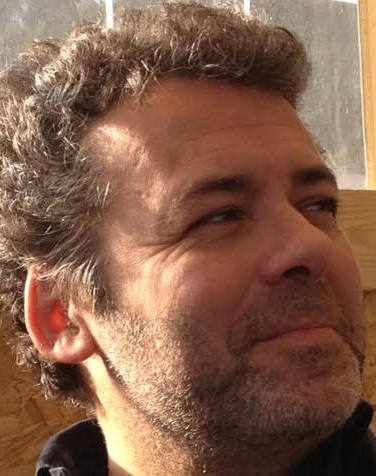 Andrea Omicini, Full Professor
Andrea Omicini, Full Professor
Alma Mater Studiorum–Università di Bologna, Italy
Abstract: Pervasiveness of ICT resources along with the promise of ubiquitous intelligence is pushing hard both our demand and our fears of
AI: demand mandates for the ability to inject intelligence ubiquitously; fears compel the behaviour of intelligent systems to be observable, explainable,
and accountable. Whereas the first wave of the new "AI Era" was mostly heralded by sub-symbolic approaches, features like explainability are better provided
by symbolic techniques. In particular, the notion of explanation should be regarded as a core notion for intelligent systems, rather than just an add-on to
make them understandable to humans. Based on symbolic AI techniques to match intuitive and rational cognition, explanation should then be regarded as a fundamental
tool for inter-agent communication among heterogeneous intelligent agents in open multi-agent systems. More generally, self-explaining agents should work as the
basic components in the engineering of intelligent systems integrating both symbolic and sub-/non-symbolic AI techniques.
Biography: Andrea Omicini (Scholar citations 10005, h-index 49 / March 2021) is Full Professor of the Alma Mater Studiorum–Università di Bologna,
and holds a PhD in Computer & Electronic Engineering. He has published over 350 articles on multi-agent systems, intelligent systems engineering, computational logic,
explainable AI, agreement technologies, self-organising systems, simulation, and pervasive systems. He is Emeritus Member of the Board of Director of the European Association
for Multi-Agent Systems (EURAMAS). He has been involved in a number of European projects on AI and MAS, from AgentLink III (2004-2005) to AI4EU (2019-2021) and StairwAI (2021–2023).
He is currently teaching intelligent systems engineering, multi-agent systems, and distributed systems.
Neoteric Frontiers in Cloud and Edge Computing
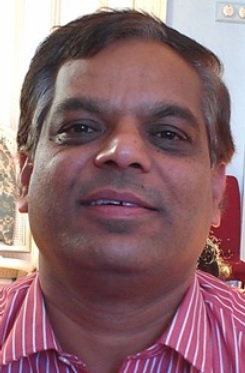 Rajkumar Buyya, Full Professor
Rajkumar Buyya, Full Professor
Cloud Computing and Distributed Systems (CLOUDS) Lab, The University of Melbourne, Australia
Abstract: Computing is being transformed to a model consisting of services that are delivered in a manner
similar to utilities such as water, electricity, gas, and telephony. In such a model, users access
services based on their requirements without regard to where the services are hosted or how they
are delivered. Cloud computing paradigm has turned this vision of "computing utilities" into a
reality. It offers infrastructure, platform, and software as services, which are made available to
consumers as subscription-oriented services. Cloud application platforms need to offer (1) APIs
and tools for rapid creation of elastic applications and (2) a runtime system for deployment of
applications on geographically distributed computing infrastructure in a seamless manner.
The Internet of Things (IoT) paradigm enables seamless integration of cyber-and-physical
worlds and opening up opportunities for creating new class of applications for domains such as
smart cities and smart healthcare. The emerging Fog/Edge computing paradigm is extends Cloud
computing model to edge resources for latency sensitive IoT applications with a seamless
integration of network-wide resources all the way from edge to the Cloud.
This keynote presentation will cover (a) 21st century vision of computing and identifies various
IT paradigms promising to deliver the vision of computing utilities; (b) innovative architecture
for creating elastic Clouds integrating edge resources and managed Clouds, (c) Aneka 5G, a
Cloud Application Platform, for rapid development of Cloud/Big Data applications and their
deployment on private/public Clouds with resource provisioning driven by SLAs, (d) a novel
FogBus software framework with Blockchain-based data-integrity management for facilitating
end-to-end IoT-Fog/Edge-Cloud integration for execution of sensitive IoT applications, (e)
experimental results on deploying Cloud and Big Data/ IoT applications in engineering, and
health care (e.g., COVID-19), deep learning/Artificial intelligence (AI), satellite image
processing, natural language processing (mining COVID-19 research literature for new insights)
and smart cities on elastic Clouds; and (f) directions for delivering our 21st century vision along
with pathways for future research in Cloud and Edge/Fog computing.
Biography: Dr. Rajkumar Buyya is a Redmond Barry Distinguished Professor and Director of the Cloud
Computing and Distributed Systems (CLOUDS) Laboratory at the University of Melbourne,
Australia. He is also serving as the founding CEO of Manjrasoft, a spin-off company of the
University, commercializing its innovations in Cloud Computing. He has authored over
850 publications and seven text books including "Mastering Cloud Computing" published by
McGraw Hill, China Machine Press, and Morgan Kaufmann for Indian, Chinese and
international markets respectively. Dr. Buyya is one of the highly cited authors in computer
science and software engineering worldwide (h-index=153, g-index=332, and 123,600+
citations). Dr. Buyya is recognised as Web of Science “Highly Cited Researcher” for six
consecutive years since 2016, IEEE Fellow, and Scopus Researcher of the Year 2017 with
Excellence in Innovative Research Award by Elsevier. He has been recognised as the "Best of
the World" twice for research fields (in Computing Systems in 2019 and Software Systems in
2021) as well as "Lifetime Achiever" and "Superstar of Research" in "Engineering and Computer
Science" discipline twice (2019 and 2021) by the Australian Research Review. Recently, he
received "Research Innovation Award" from IEEE Technical Committee on Services Computing
and "Research Impact Award" from IEEE Technical Committee on Cloud Computing.
Software technologies for Grid, Cloud, and Fog computing developed under Dr.Buyya's
leadership have gained rapid acceptance and are in use at several academic institutions and
commercial enterprises in 50+ countries around the world. Manjrasoft's Aneka Cloud technology
developed under his leadership has received "Frost New Product Innovation Award". He served
as founding Editor-in-Chief of the IEEE Transactions on Cloud Computing. He is currently
serving as Editor-in-Chief of Software: Practice and Experience, a long standing journal in the
field established 50+ years ago. For further information on Dr.Buyya, please visit his cyberhome:
www.buyya.com
Metaverse, web3, and the NFT market
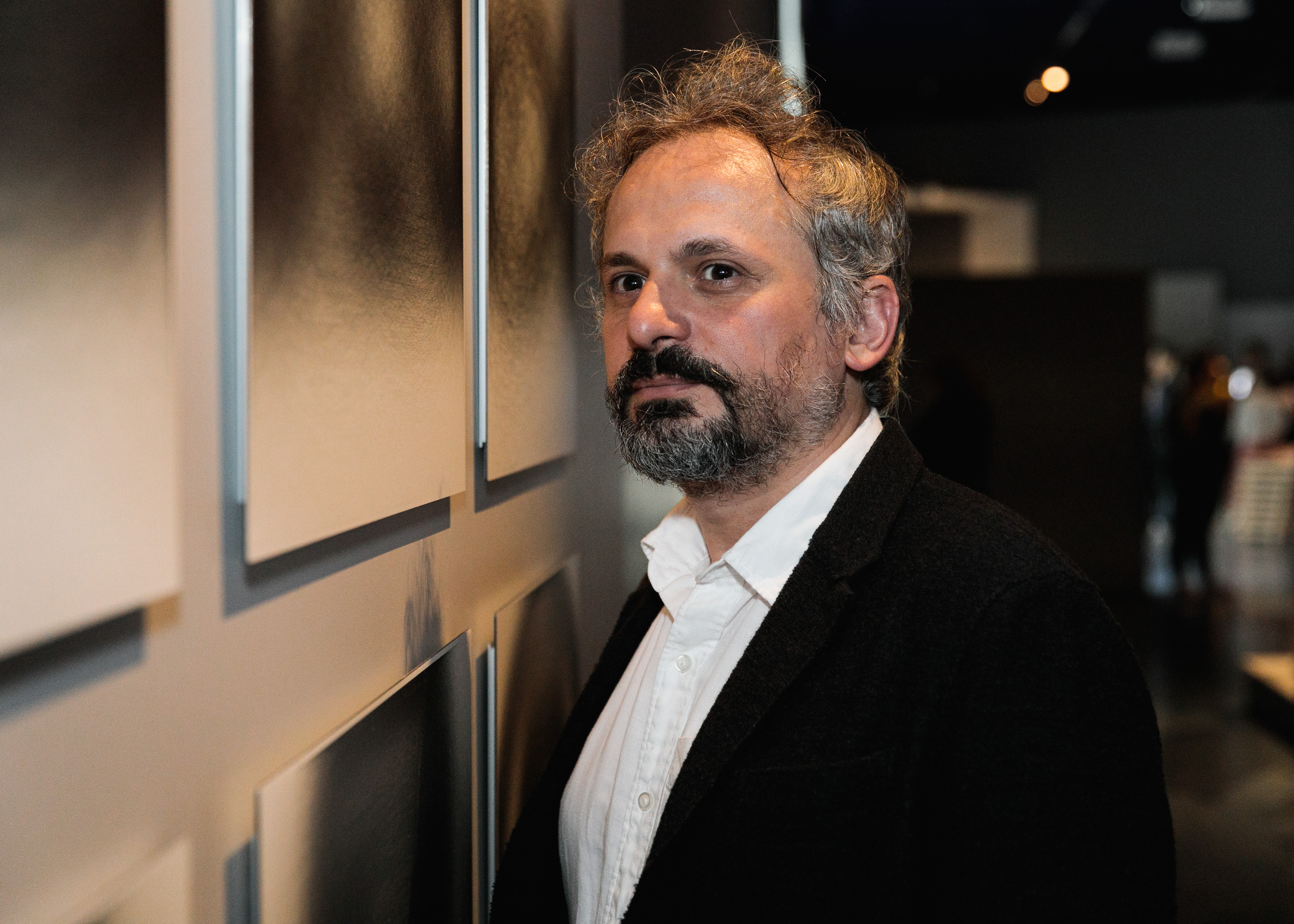 Mauro Martino, Principal Research Scientist
Mauro Martino, Principal Research Scientist
MIT-IBM Watson AI Lab, Cambridge, MA, USA
Abstract: Non Fungible Tokens (NFTs) are digital assets that represent objects like art, collectible, and in-game items. They are traded online, often with cryptocurrency, and are generally encoded within smart contracts on a blockchain. In the Metaverse it is possible to collect avatars and game items, wear digital designer clothes and exhibit intangible works of art, all easily purchased in the form of NFTs.
We looked at 6.1 million trades of 4.7 million NFTs to learn about market traders, visual features and price prediction. During this talk, we will try to understand self-organizing communities in web3 networks, especially art-related communities. Is the decentralised NFT world really decentralised? Or is it re-creating the same structures we know in the traditional art market?
Biography: Mauro Martino is a Principal Research Scientist at the MIT-IBM Watson AI Lab (Cambridge, MA, USA), where he founded and directs the Visual Artificial Intelligence Lab. He was formerly an Assistant Research Professor at Northeastern University working with Albert-Laszlo Barabasi at the Center for Complex Network Research and with David Lazer at the Institute for Quantitative Social Science (IQSS) at Harvard University.
He obtained his PhD with a thesis in Urban Interaction Design within Carlo Ratti’s Senseable City Lab (Massachusetts Institute of Technology), and Polytechnic University of Milan.
Mauro holds several patents and has co-authored over 40 scientific publications. He has created data visualization for the BBC, Scientific American, The New York Times, The Washington Post, Süddeutsche Zeitung, Der Spiegel, Le Figaro, Corriere della Sera, National Geographic, Popular Science, Wired. His work has been exhibited worldwide at venues such as the Venice Biennale, the Serpentine Gallery in London, the Ludwig Museum in Budapest, GAFTA in San Francisco, Lincoln Center in New York, the ZKM | Center for Art and Media in Karlsruhe (Germany), and his work is part of the permanent collection of the Ars Electronica Center in Linz.
Mauro has been a presenter at TEDx Cambridge (2012) and TEDx Latvia (2016), his works have been featured in scientific journals such as Nature, Science, PNAS, and textbooks about AI Art and Data Visualization: «Possible Futures: Art scenarios and artificial intelligence» by Rebecca Pedrazzi, «Data Visualization» by Andy Kirk, «The Truthful Art» by Alberto Cairo, «The Best American Infographics» 2015 and 2016 editions.
Mauro is an award-winning designer whose projects received the Gold Medal at the 2017 Vizzies Visualization Challenge by National Science Foundation, he has won several times the Webby Award, the Innovation by Design Award (by Fast Company), the Information is Beautiful Award.
His art project AIPortraits (2018/2019) was the first generative GAN-based application to go viral worldwide, with over 8 million unique users per day. In 2018 he presented at NeurIPS the first collection of sculptures generated with a 3D GAN model he invented.
Mauro Martino is Professor of Practice at Northeastern University, where he has been teaching the Artificial Intelligence for Creativity and Design course for several years. Each year he gives workshops and lectures on AI and Creativity at various universities, including MIT and Harvard University.
Consensus Protocols for Connecting Autonomous Vehicles
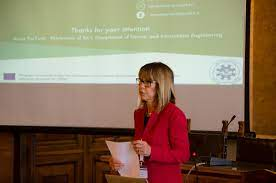 Maria Pia Fanti, Full Professor
Maria Pia Fanti, Full Professor
Polytechnic University of Bari, Italy
Abstract: The distributed control problem of multi-agent networks received tremendous attention in the last
decades due to its applications in different areas. Each agent is a dynamical system and the problem of
reaching an agreement on all or some components of the agents’ status is known as consensus problem.
The talk presents two strategies of consensus protocols to be applied in leaderless network of agents.
The first consensus protocol is applied by vehicles that that have to reach a common velocity while
forming a uniformly spaced string. The consensus protocol parameters are optimized for networks
characterized by a communication topology described by a class of directed graph having a directed
spanning tree, in order to maximize the convergence rate and avoid oscillations.
The second consensus protocol solves an intersection management problem by using only V2V
communication, i.e., without employing an external intersection management agent. The AVs apply an
iterative algorithm, which avoids collisions crossing the intersection and minimizes the delay or the
anticipation with respect to a forecast exit time from the intersection.
The talk will enlighten that the presented control methods will be applied in Horizon Europe projects
for managing connected, cooperative ad automated vehicles.
Biography: Maria Pia Fanti (M’92-SM’02-F’17) received the Laurea degree in electronic engineering from the
University of Pisa, Pisa, Italy, in 1983. She was a visiting researcher at the Rensselaer Polytechnic
Institute of Troy, New York, in 1999. Since 1983, she has been with the Department of Electrical and
Information Engineering of the Polytechnic University of Bari, Italy, where she is currently a Full
Professor of system and control engineering and Chair of the Laboratory of Automation and Control.
Her research interests include management and modeling of complex systems, such as transportation,
logistics and manufacturing systems; discrete event systems; Petri nets; consensus protocols; fault
detection. Prof. Fanti has published more than 320 papers and two textbooks on her research topics.
She was senior editor of the IEEE Trans. on Automation Science and Engineering and she is Associate
Editor of the IEEE Trans. on Systems, Man, and Cybernetics: Systems. She was member at large of the
Board of Governors of the IEEE Systems, Man, and Cybernetics Society, and currently she is member
of the AdCom of the IEEE Robotics and Automaton Society, and chair of the Technical Committee on
Automation in Logistics of the IEEE Robotics and Automation Society. Prof. Fanti was General Chair
of the 2011 IEEE Conference on Automation Science and Engineering, the 2017 IEEE International
Conference on Service Operations and logistics, and Informatics and the 2019 IEEE Systems, Man, and
Cybernetics Conference.